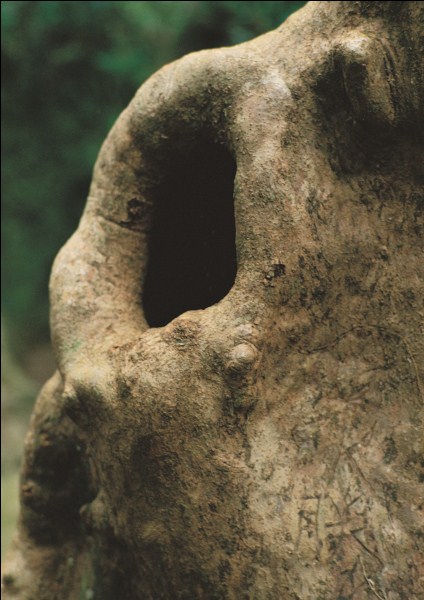Dear Everyone,
Isn’t it about time you got your inner self in shape? Its time to stop procrastinating and get your mind looking looking sleek, svelte and sexy!
Yes, the Integral Meditation Asia meditation term starts this Sunday with the three hour Mind of Ease workshop (full details below), and then continues with the Mind of Ease Five Week Course beginning on Wednesday 5th September. Seriously, if you have been wanting to get your mind in shape for a while, and are looking for the opportunity, these courses are a great opportunity to get yourself up and running.
This weeks article looks at the interface between inner fitness and outer fitness, and the different ways in which meditation promotes your own integral inner fitness.
Toby
Upcoming Classes and Workshops at Integral Meditation Asia
Date: Sunday 2nd September
Time: 9.30am-12.30pm
Location: SCWO Training Room 4, 96 Waterloo Street, Singapore. For map click HERE
This three hour workshop offers a practical introduction to meditation that aims to integrate the fundamentals of traditional meditation practice with contemporary insights from psychology and neuropsychology.
What you will learn
Simple meditation techniques which can be condensed into a ten minute daily practice that:
- Reduces and transforms anxiety and stress, releases unwanted tension from your body-mind.
- Helps you to build an intention toward yourself and others genuinely based around warmth, friendship and love
- Trains your mind to take in, focus upon and appreciate the positive in your life
- Develop your concentration skills (the ability to focus one-pointedly upon a single object/task)
- The ability to find and relax deeply into the natural inner space and silence of your mind
- An increased capacity to witness the contents of your consciousness as an observer, rather than being completely identified and wrapped up in it.
Again, all of these skills can be consolidated into a daily meditation practice that can be done in ten minutes!
The Structure of the Workshop:
1st Hour – An explanation of what meditation is, followed by an introduction to and practice of the basic seven stage meditation on how to develop a mind of ease, relaxed concentration and positive intention.
2nd Hour – Questions and answers, followed by meditation on awareness of our stream of consciousness, and learning to orient our mind around thoughts and perspectives that give rise to happiness, wellbeing and appreciation.
3rd Hour – Talk on how to develop inner focus and concentration, and how to relax into the natural inner space and silence of the mind. Practice of meditation for developing concentration and awareness of the inner space and silence of the mind.
You will also receive:
- Extensive workshop notes giving a detailed of the meditation practices that are taught.
- Three ten minute MP3 meditation recordings that you can take away and listen to as a support for your personal practice
Cost of Workshop: Sing $85 per person
CLICK HERE TO PURCHASE MIND OF EASE WORKSHOP BY CREDIT CARD
TO PURCHASE BOTH THE THREE HOUR MIND OF EASE WORKSHOP AND THE THE FIVE WEEK MIND OF EASE COURSE AT A SPECIAL DISCOUNTED RATE OF SING $145 (SAVE $30!) CLICK HERE!
To register or for further enquiries: Email info@integralmeditationasia.com, or call 65-68714117
 Isn’t it About Time You Got Your Inner Self in Shape? (Integral Inner Fitness Training)
Isn’t it About Time You Got Your Inner Self in Shape? (Integral Inner Fitness Training)
As someone trying to live and integral life, I try and practice (in however rudimentary a way) an integral form of physical fitness. I have six basic categories with I try to arrange my physical fitness activities. The idea is that each of these activities keeps a different aspect of my physical body and brain ability used and in good shape. Here they are:
- Strength training – The development of muscle strength through weights etc…
- Stamina or cardiovascular training – Eg: Jogging·
- Flexibility – Stretching, Yoga, Qi gong and so on…
- Hand-eye co-ordination – Through Racquet sports, or other ball sports for example
- Spatio-temporal awareness – The ability to think and visualize in three dimensions, for example in order to apply strategy in ball games
- Diet and Rest
Each of these activities has its own important and crucial role to play in the overall development of integral physical body fitness.
I have to say that integral physical fitness training is a great way to get your mind in shape as well, but what I want to do now it to talk about how meditation is a type of integral inner fitness training.
What I have done below is to take each of the categories of outer fitness above and show how practicing meditation has a corresponding inner fitness benefit!
The six ways in which you get your inner self in shape through meditation:
- Strength Training – Meditation helps us to develop a strong mind by developing our ability to focus our mind on a single object for an extended period of time, thus increasing our mental strength. Done correctly, concentration training in meditation helps us to find more inner and outer energy.
- Stamina training – Meditation increases our awareness, appreciation and gratitude for the good, the beautiful and the true in our life, giving us access to deeper levels of happiness and wellbeing. Thus in turn makes us more resilient to temporary setbacks and able to “keep on keeping on” with the goals that are important to us where other people would give up
- Flexibility – Integral meditation makes our mind soft and pliable, able to adopt the optimally “positive” perspective on any given situation, rather than getting stuck in viewpoints that are negative or toxic and that are not serving our happiness in any meaningful way.
- Mental hand-eye co-ordination – Meditation gives us greater awareness of the way in which our mind, feelings and bodily energies are co-ordinating themselves together. This awareness alerts us when our thoughts and feelings are out of alignment, and encourages us to get them back on the same page
- Spatio-Temporal Awareness – Meditation makes us deeply appreciative of and able to rest in the inner space and silence of our mind enabling us to retain clarity of mind even it is busy or when we are under a degree of stress. Meditation also gradually increases our ability to see and visualize objects in our minds eye clearly and vividly and to use this skill consciously to our advantage.
- Diet and Rest – One of the central practices that I teach in my meditation coaching is how we can create a safe space, enabling us to rest and regenerate our energies, and also to improve the quality of our sleep. As mentioned in the “strength and stamina” categories above, meditation encourages us to feed ourself a steady diet of positive and energy enhancing thoughts and feelings, rather than negative and toxic emotions and thought patterns.
Finally, for those who may be interested, there are three interesting books by integral practitioners that look at the relationship between physical fitness training and inner meditation training, all very interesting reads in their own way:
- The Future of the Body by Michael Murphy
- Strength for Life by Shawn Phillips
- Strength to Awaken by Rob McNamara
© Toby Ouvry 2012, you are welcome to use or share this article, but please cite Toby as the source and include reference to his website www.tobyouvry.com
 Resting in Safety, Thriving on Risk
Resting in Safety, Thriving on Risk Three Levels of Self, Three Levels of Focus-in-Time
Three Levels of Self, Three Levels of Focus-in-Time



 Article of the Week:
Article of the Week:
 Meditation Workshop: An Introduction to Meditation From the Perspective of Tibetan Buddhism
Meditation Workshop: An Introduction to Meditation From the Perspective of Tibetan Buddhism